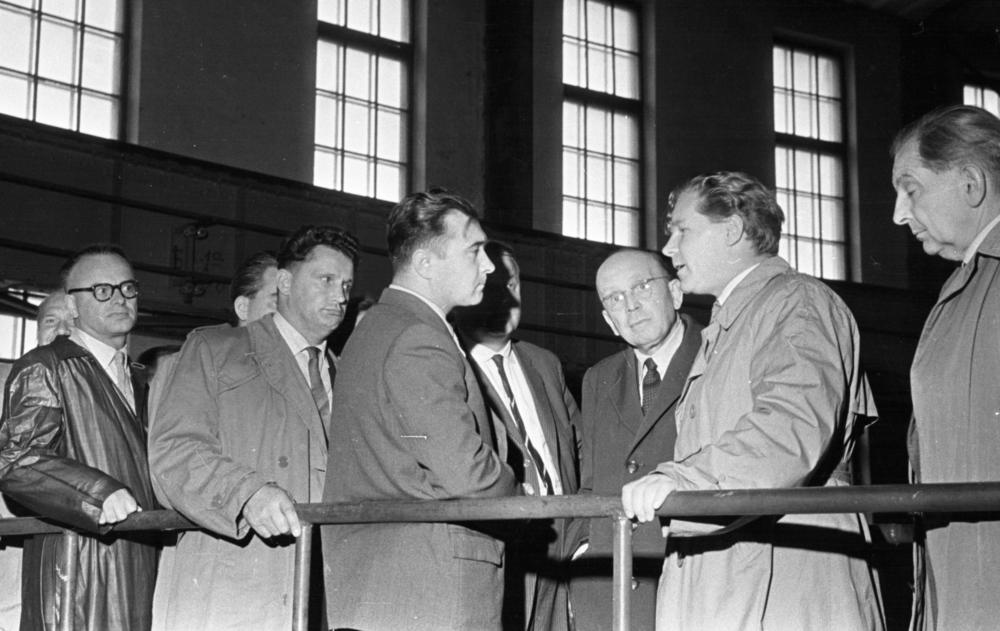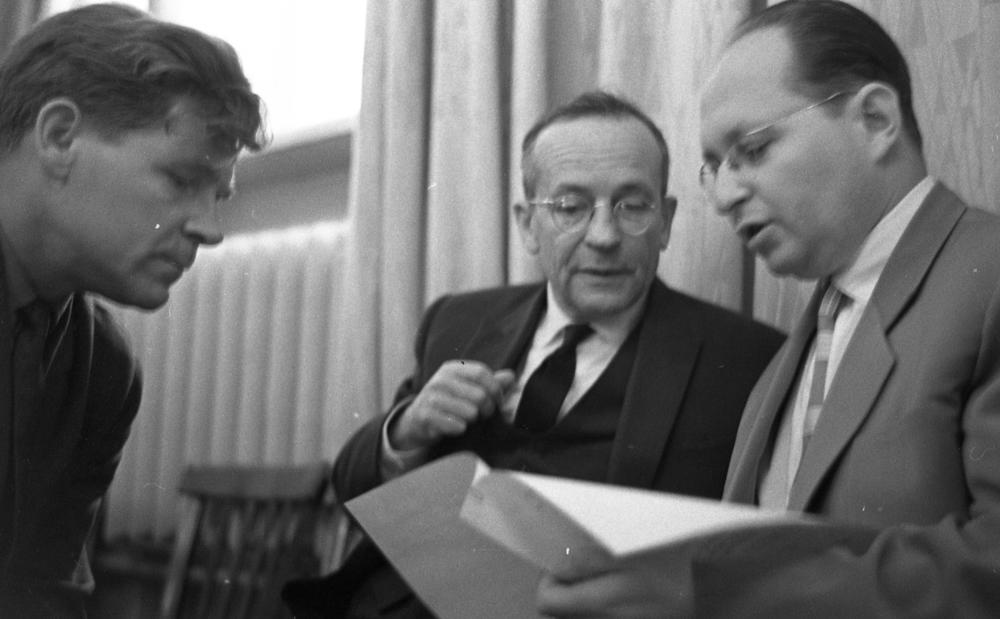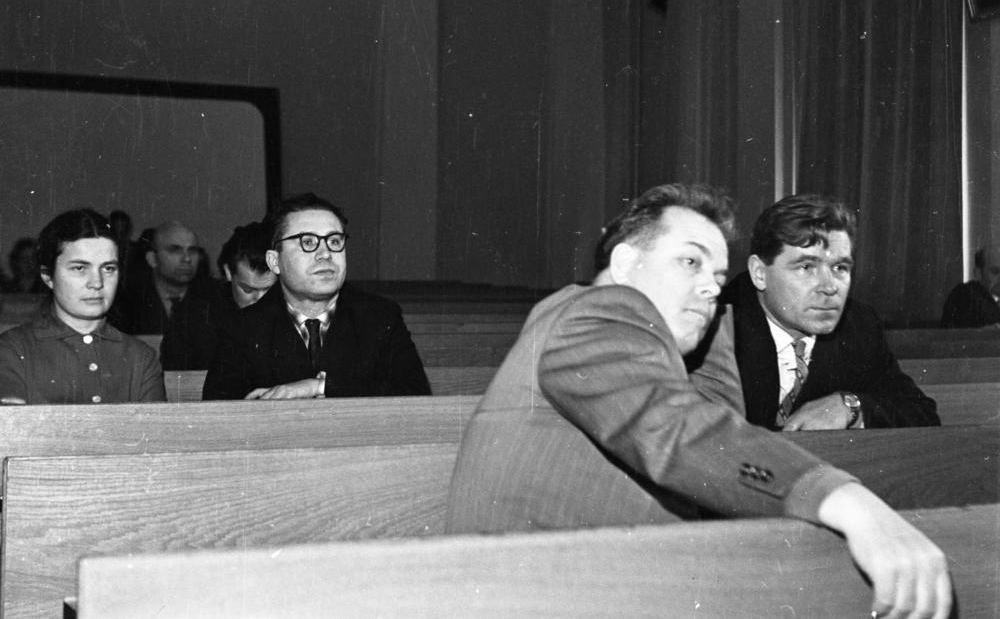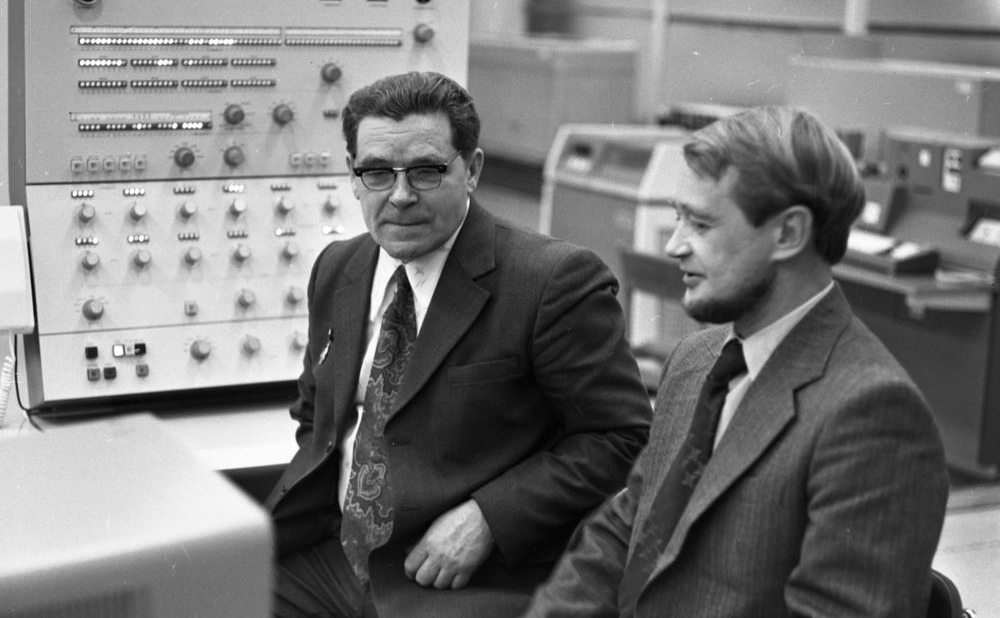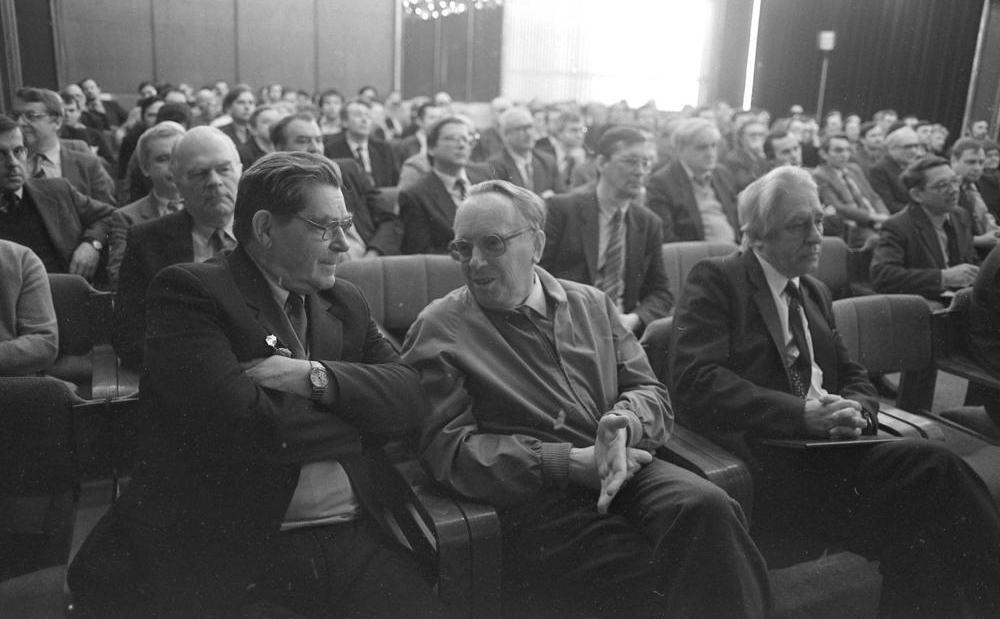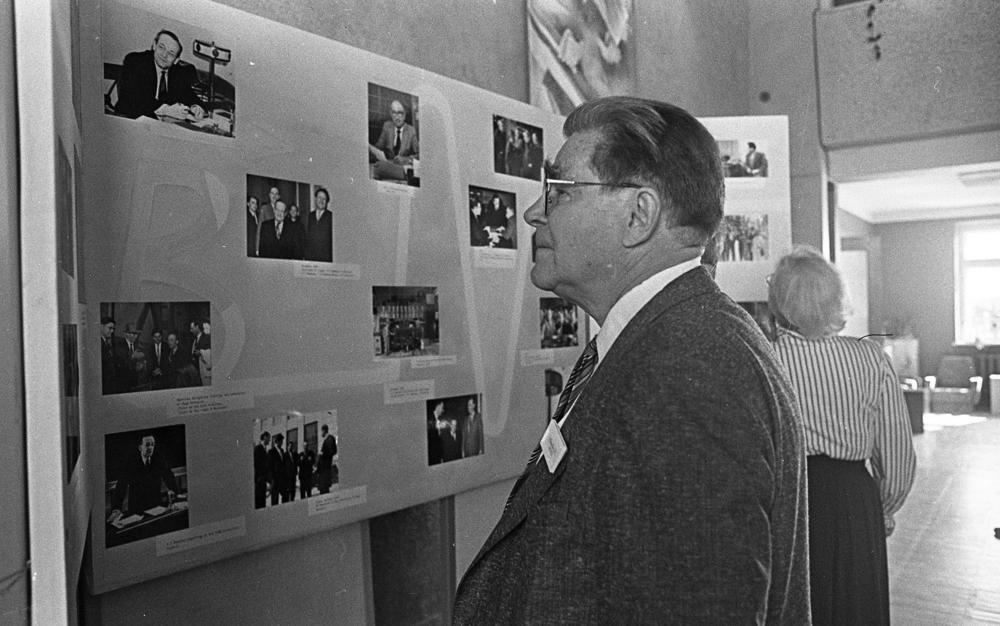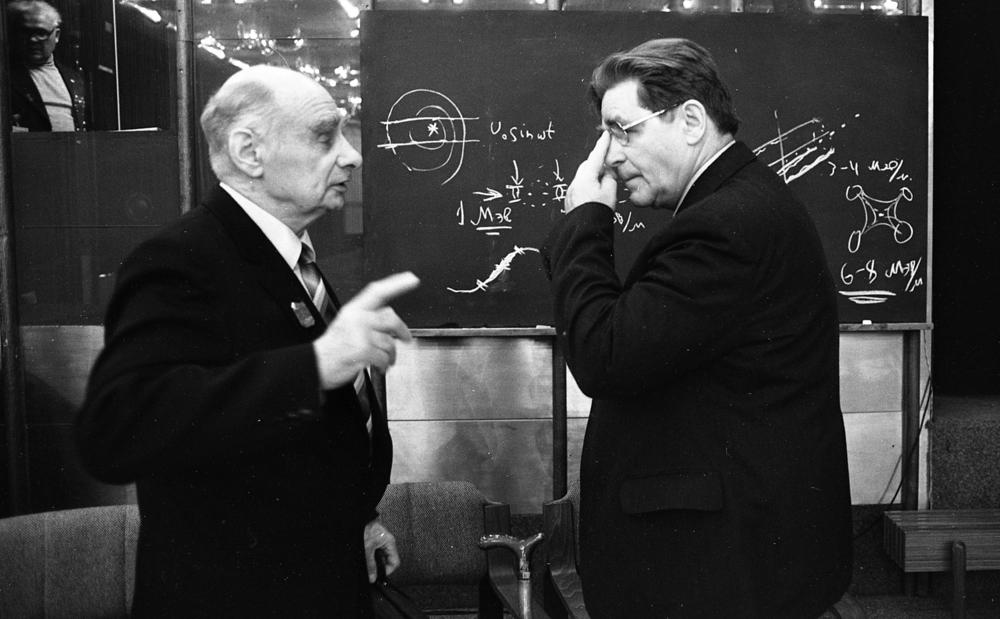In memory of LHEP JINR co-founder Ivan Chuvilo
News, 09 October 2024
9 October 2024 marks the centenary of the birth of a talented scientist in nuclear and particle physics, one of the founders of the JINR Laboratory of High Energy, LHE Director in 1966–1968, Professor Ivan V. Chuvilo (09/10/1924-16/03/2001).
Ivan V. Chuvilo was part of the generation that entered adulthood on the fronts of the Second World War. While commanding a machine gun platoon in the battles near Stalingrad, Lieutenant Chuvilo was seriously injured and lost his right hand. After demobilisation, he began studying at the Faculty of Physics of Moscow State University. As a student, he already participated in cosmic radiation study at the Pamir high-altitude research station of the Lebedev Physical Institute (LPI) of the Academy of Sciences of the Soviet Union under the guidance of one of the future JINR founding fathers of JINR and the accelerator physics pioneers, Vladimir Veksler. Having graduated, Ivan Chuvilo joined his laboratory at the LPI. In 1953, along with his colleagues, the scientist received the Stalin Prize for a series of studies on the interaction of heavy nuclei with gamma rays performed at the LPI synchrotron.
In May 1954, at the invitation of Vladimir Veksler, Ivan Chuvilo became his Deputy for Scientific Work at the Electrophysics Laboratory of the USSR Academy of Sciences. After the founding of the Joint Institute for Nuclear Research in 1956, it became the JINR Laboratory of High Energy (LHE).
During these years, Ivan Chuvilo proved to be a skilled scientific leader, attentive to the urgent tasks of the laboratory, whether it was recruiting young employees, developing a research programme, or preparing equipment for experiments at the JINR Synchrophasotron. Dozens of young researchers under his leadership would go on to become Doctors and Candidates of Sciences. He actively participated in experiments on the Synchrophasotron for the search and study of baryon and K meson resonances, pioneering research in physics of elementary particles and atomic nuclei.
The scientist significantly contributed to establishing international cooperation between LHE and many scientific centres of the world. He co-chaired the US-USSR Joint Coordinating Committee on Research in the Fundamental Properties of Matter. He organized the Dubna-American research team to conduct the first experiment on elastic proton scattering inside a vacuum chamber at the accelerator of the Fermi National Laboratory (USA). He received the USSR State Prize for the results of these experiments.
Ivan Chuvilo was one of the 14 co-authors of one of the JINR discoveries: the scientific team was the first to experimentally establish the electron-positron annihilation into phi-zero meson, confirming the mutual transformation of nuclear particles and photons into each other, as predicted by theorists.
After leaving LHE JINR in 1968 and becoming the Director of the Institute for Theoretical and Experimental Physics (ITEP) in Moscow, a post he would keep for 30 years, Ivan Chuvilo actively supported the joint work of physicists of these scientific centres. Under his leadership, the ITEP developed the area of construction of heavy-water reactors.
In the early 1970s, together with other employees, ITEP Director came up with the idea of creating an accelerator-driven subcritical reactor, a high-current neutron generator. Nowadays, this suggestion is under discussion as one of the nuclear waste transmutation methods.
The employees of the Institute noted that Ivan Chuvilo was a friendly and thoughtful director. In addition, at the same time, he educated young scientists as the head of a department at the Moscow Institute of Physics and Technology.
Ivan Chuvilo was the author of about 150 scientific publications in various fields of physics: cosmic rays, nuclear physics, particle physics, physics of particle interactions at high energies, and the methodology of physical experiments. He co-authored six inventions, was a member of the editorial boards of the Atomic Energy and Nuclear Physics journals. The scientist was awarded six times, both for courage shown during the Second World War and for merits in labour.
